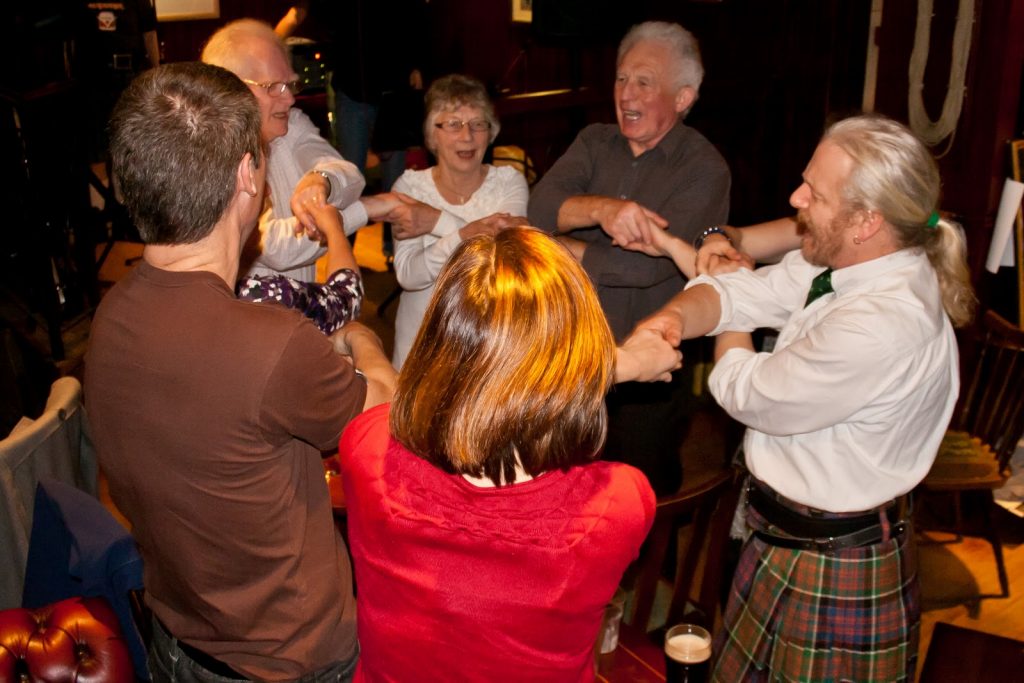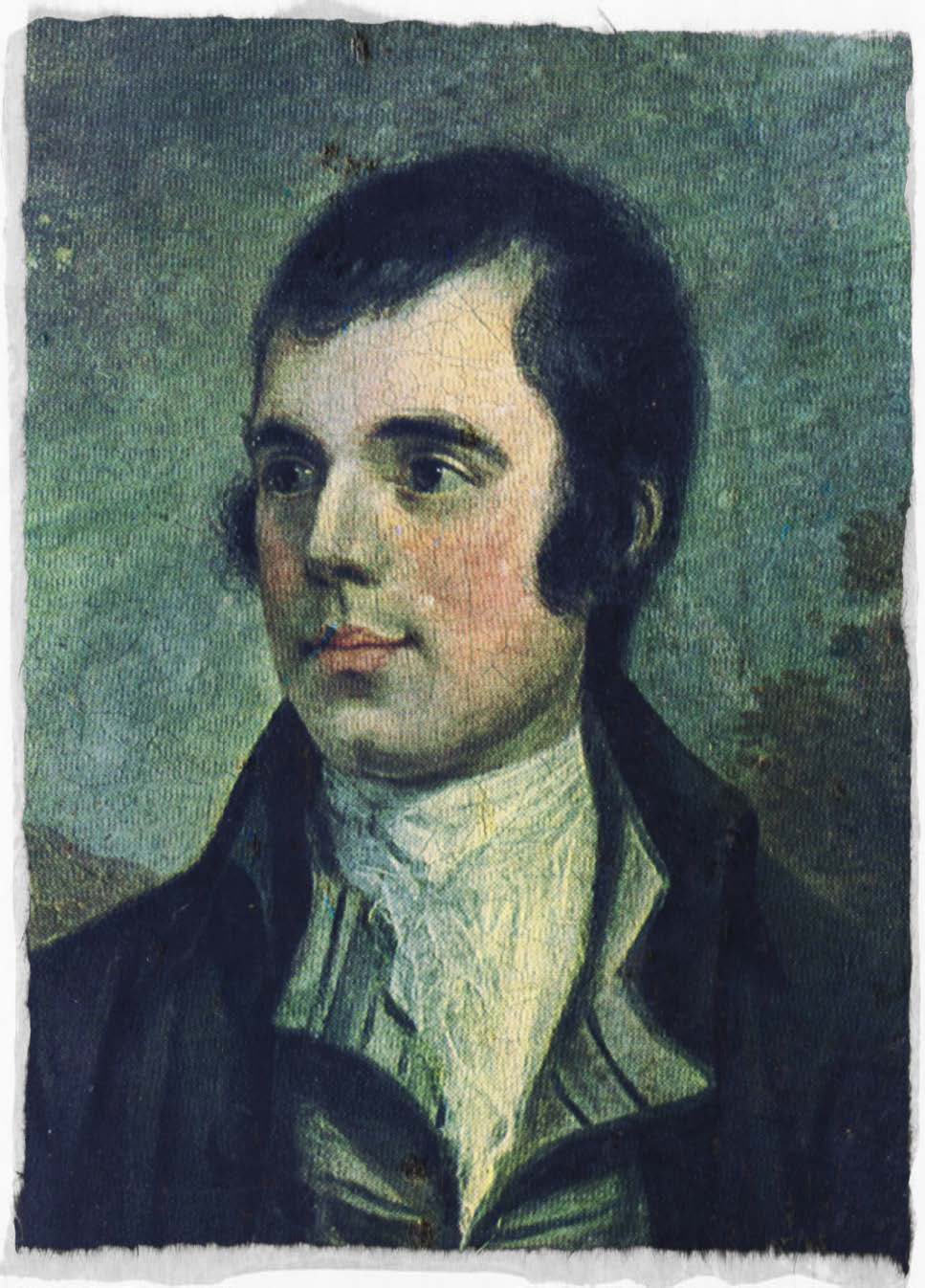Scotland’s’ Bard and a Festive Tradition
Born in Alloway, Scotland, on January 25, 1759, Robert Burns was the first of William and Agnes Burnes’ seven children. His father, a tenant farmer, educated his children at home. Burns also attended one year of mathematics schooling and, between 1765 and 1768, he attended an “adventure” school established by his father and John Murdock. His father died in bankruptcy in 1784, and Burns and his brother Gilbert took over the farm. This hard labor later contributed to the heart trouble that Burns’ suffered as an adult.
At the age of fifteen, he fell in love and shortly thereafter he wrote his first poem. As a young man, Burns pursued both love and poetry with uncommon zeal. In 1785, he fathered the first of his fourteen children. His biographer, DeLancey Ferguson, had said, “it was not so much that he was conspicuously sinful as that he sinned conspicuously.” Between 1784 and 1785, Burns also wrote many of the poems collected in his first book, Poems, Chiefly in the Scottish Dialect, which was printed in 1786 and paid for by subscriptions. This collection was an immediate success and Burns was celebrated throughout England and Scotland as a great “peasant-poet.”
In 1788, he and his wife, Jean Armour, settled in Ellisland, where Burns was given a commission as an excise officer. He also began to assist James Johnson in collecting folk songs for an anthology entitled The Scots Musical Museum. Burns’ spent the final twelve years of his life editing and imitating traditional folk songs for this volume and for Select Collection of Original Scottish Airs. These volumes were essential in preserving parts of Scotland’s cultural heritage and include such well-known songs as “My Luve is Like a Red Red Rose” and “Auld Land Syne.” Robert Burns died from heart disease at the age of thirty-seven. On the day of his death, Jean Armour gave birth to his last son, Maxwell.
Most of Burns’ poems were written in Scots. They document and celebrate traditional Scottish culture, expressions of farm life, and class and religious distinctions. Burns wrote in a variety of forms: epistles to friends, ballads, and songs. His best-known poem is the mock-heroic Tam o’ Shanter. He is also well known for the over three hundred songs he wrote which celebrate love, friendship, work, and drink with often hilarious and tender sympathy. Burns died on July 21, 1796, at the age of 37. Even today, he is often referred to as the National Bard of Scotland.
Burns’ best known work is the familiar tune of “Auld Lang Syne,” which can be heard ringing in the New Year throughout the English-speaking world and beyond. Crowds will join in to sing the words they know well, and despite its popularity, most will likely mumble through and pretend to sing the bulk of the song. Few revelers know all the words and fewer still know the meaning behind them.
In fact, according to the UK Daily Mail a 2011 poll of 2105 adults showed that three quarters of respondents will mime or make up the words they do not know and a full 37 percent do not know a single line. Shockingly one in ten millennials believe that the words were written by Elvis Presley or Paul McCartney!
“Auld Lang Syne” derives from a 1788 poem by Robert Burns who described it as “an old song, of the olden times, and which has never been in print, nor even in manuscript until I took it down from an old man.” Based on the similarity of the first verse to some lines of the 1711 Scottish ballad “Old Long Syne” by James Watson, “Auld Lang Syne” is believed to be a combination of a traditional folk song, with significant additions by Burns himself.
While a full translation and pronunciation guide follows, translations of the song rarely tackle the phrase “auld lang syne,” and if they do it is usually to “old long syne.” In standard English it should most likely translate to “old long since,” but we are best served with a more colloquial translation like “long, long ago,” or “for the sake of old times.” In the context of the song itself, it is helpful to think that the song is asking the rhetorical question “Is it right that old time be forgotten?”

“Auld Lang Syne” is typically sung to the tune of a traditional folk song (#6294 in the Roud Folk Song Index) which was probably originally a dance with a much quicker tempo (an example of which is the version performed by the “bagrock” group Red Hot Chilli Pipers). Revelers will typically form a circle around the dance floor and join hands while singing, crossing their arm over their chests and gripping the hand of the person to their left with their own right hand and the hand to their right with their left hand. This is usually done from the beginning of the song except in Scotland where the tradition is to only cross arms and clasp hands at the beginning of the last verse when the song calls “And there’s a hand, my trusty fiere! and gie’s a hand o’ thine!”
The theme of “Auld Lang Syne” is calling for the preservation of our oldest and dearest friendships. Though Burns may never have intended for it to act as a farewell to the old year, it’s sentiment has made it a staple of New Year’s and Hogmanay celebrations. It is also common at other events which celebrate endings or beginnings such as weddings, funerals, graduations, scout gatherings, or the election of a new government. You may also have sung “Auld Lang Syne” at the end of a cèilidh as many clans try to do at gatherings.

